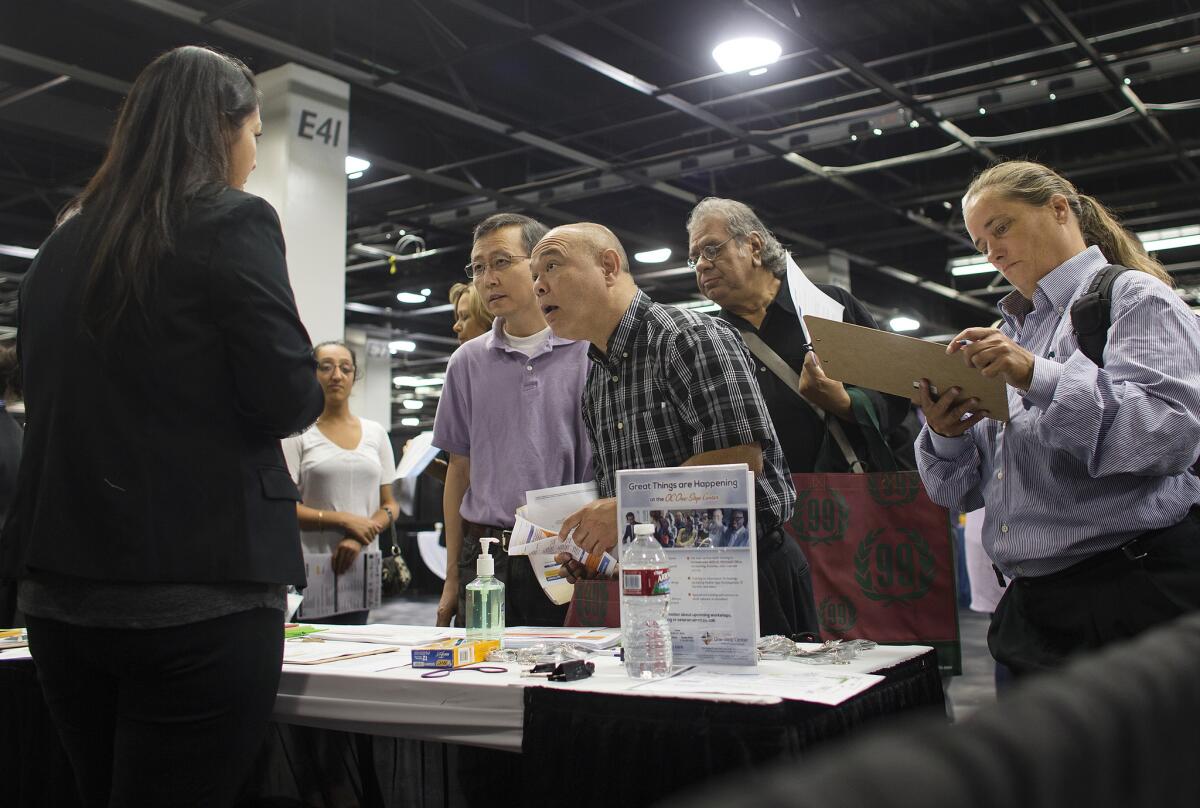Slow wage growth threatens California economic recovery, report finds

- Share via
California’s economic recovery has featured a growing share of lower-wage jobs, raising concerns about the opportunities for middle-class workers hit hard by the Great Recession, a new analysis finds.
The California Budget Project, a nonprofit economic research group, analyzed decades of state labor data to find that low- and middle-wage workers have seen significant pay declines over the last decade.
Local and state government jobs -- traditionally a reliable source of middle-class employment -- have been particularly slow to recover.
“Persistent weakness in the public sector job market is undermining the overall strength of the economic recovery,” the report found. “Simply recovering from the Great Recession will not be sufficient to ensure broad-based economic growth that reaches workers across the wage distribution.”
Over the last year, California has added jobs at one of the fastest rates in the nation, and the state unemployment rate has declined faster than the national average. But the state’s current unemployment rate of 7.4% is at a level “typically seen during recessions, rather than this far into an economic recovery,” according to the analysis.
The current unemployment rate is still higher than at any time during the last recession in 2001, after the dot-com bust.
“The labor market is moving in the right direction, but for many California workers the current economic recovery is not yet strong enough to heal the scars left by the Great Recession,” the report says.
Even before the jobs crisis of the recession, low- and middle-wage workers in California had been contending with stagnating pay for decades. In 2006, low-wage workers were making 7.2% less than similar workers made in 1979, after adjusting for inflation.
In 2013, that gap expanded to 12.2%.
By contrast, high-wage workers in the top 20th percentile of wages made 17.4% more than similar workers in 1979.
Looking ahead, low-wage jobs are forecast to be one of the fastest-growing segments of the workforce. The state expects food service and preparation jobs -- with a median wage of $9.37 an hour last year -- to produce the largest number of new jobs by 2015 for any occupation, according to numbers from the California Employment Development Department.
To counter the effects of wage declines and improve prospects for the workforce, the report advocates renewed support for higher education investments in the state, continued increases in state minimum wages and investments in affordable preschool and after-school care to assist working parents.
“The persistent challenges of wage erosion and the rising share of workers in low-wage jobs call for a mix of policies that expand opportunities for Californians while boosting the pay for low-wage workers,” the report concludes.
Twitter: @c_kirkham
More to Read
Inside the business of entertainment
The Wide Shot brings you news, analysis and insights on everything from streaming wars to production — and what it all means for the future.
You may occasionally receive promotional content from the Los Angeles Times.











